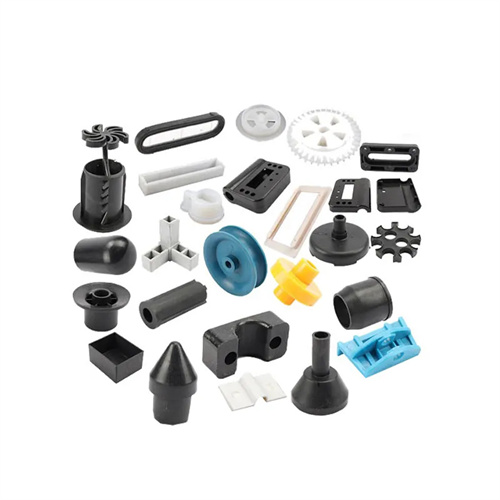The connection method between the slider and the side core pull directly affects the motion accuracy and load-bearing capacity of the core pull mechanism. In injection mold design, the selection must be based on the undercut characteristics of the plastic part, production batch, and material properties. Among common rigid connection methods, bolt fastening is the most widely used. High-strength hexagon socket bolts are used to rigidly secure the side core pull to the slider body. This method is suitable for applications with low core pull forces (less than 5kN) and short strokes (less than 50mm). In a cosmetic bottle cap mold, the side core pull requires an 8mm diameter internal thread. This connection is achieved using M6×16, grade 12.9 bolts, with locating pins for axial positioning, ensuring a coaxial error of no more than 0.02mm between the side core pull and the slider. In actual production, this connection method has withstood 100,000 mold cycles without any loosening. The core pull action is stable, and the part thread accuracy remains at IT8 level, meeting screwing requirements.

The hinged connection provides a certain degree of angular compensation for the slider and side core pulls, making it suitable for situations where there are slight changes in the core pulling direction or where interference needs to be avoided. In the undercut molding of the inside of a certain car door handle, the side core pulls need to be tilted 15°. If a rigid connection is used, it is easy for the side core pulls to become stuck due to assembly errors. The technical team designed a pin-type hinge structure. The side core pulls are hinged to the slider via a 10mm diameter 40Cr pin, with a 0.1mm radial clearance to achieve micro-swing. At the same time, bronze bushings are embedded in the contact surface to reduce wear. This structure allows the angular deviation during the core pulling process to be automatically compensated by ±0.5°, and the fluctuation of the core pulling force is reduced from ±15% to ±5%. The trouble-free operation time of the mold is extended to 80,000 times, which is 60% higher than that of the rigid connection. The surface roughness of the undercut surface of the plastic part is maintained below Ra0.8μm.

The dovetail groove connection, with its excellent guiding properties, excels in long-stroke side pulls (greater than 100mm), effectively preventing radial deflection during the pull. The side pulls on a refrigerator drawer slide reach 120mm in length and utilize a 20mm-wide dovetail groove. The clearance between the slider and the side pull is controlled to 0.03-0.05mm, and a polytetrafluoroethylene wear strip is installed on the bottom to reduce friction. Finite element analysis verified that the maximum deflection of this connection at a pull force of 8kN is only 0.12mm, far lower than the 0.35mm of a rigid connection, ensuring that the straightness error of the plastic part slide does not exceed 0.2mm/m. In practice, regular lubrication of the dovetail groove (using lithium-based grease every 500 mold cycles) keeps wear to 0.01mm per 10,000 mold cycles, extending the maintenance period by three times compared to bolted connections.

The elastic connection method uses springs or disc springs to preload the side core pulls, making it suitable for brittle plastic parts that need to cushion the impact of core pulling. For a glass fiber reinforced PET electronic connector, rigid contact with the side core pulls could easily cause edge cracking. The design team used an 8mm Φ cylindrical coil spring (1.2mm steel wire diameter, 30mm free length) to elastically connect the side core pulls to the slider. Initial spring compression creates a 5mm buffer stroke, reducing the core pulling force from an instantaneous peak of 2.5kN to a steady 1.8kN. Furthermore, the spring’s preload (1.2kN) ensures that the side core pulls fit tightly into the mold cavity during mold closing, preventing melt overflow. After improvements, the defective part cracking rate dropped from 9% to 0.3%, and the spring’s elastic modulus decayed by less than 5% after 200,000 compressions, still meeting performance requirements.

Combined connections combine the advantages of multiple methods to address complex core pulling requirements. The side core pulling mechanism of a particular industrial valve plastic part must withstand a 12kN core pulling force while compensating for 0.3mm assembly error. The technical team innovatively designed a “bolt + guide key + disc spring” combination structure: M10 bolts provide a rigid connection foundation, two 10mm wide guide keys control radial deflection, and four 12mm disc springs provide 0.5mm axial elastic compensation. This structure absorbs minor displacement caused by melt pressure fluctuations during the holding phase. The guide keys ensure the straightness of the side core pulling during core pulling, keeping the flatness error of the plastic part’s sealing surface within 0.05mm. After 150,000 production runs, the combined connection has a comprehensive failure rate of only 0.2%, far lower than the 1.5%-3% of a single connection method, providing reliable support for the production of high-precision plastic parts.
